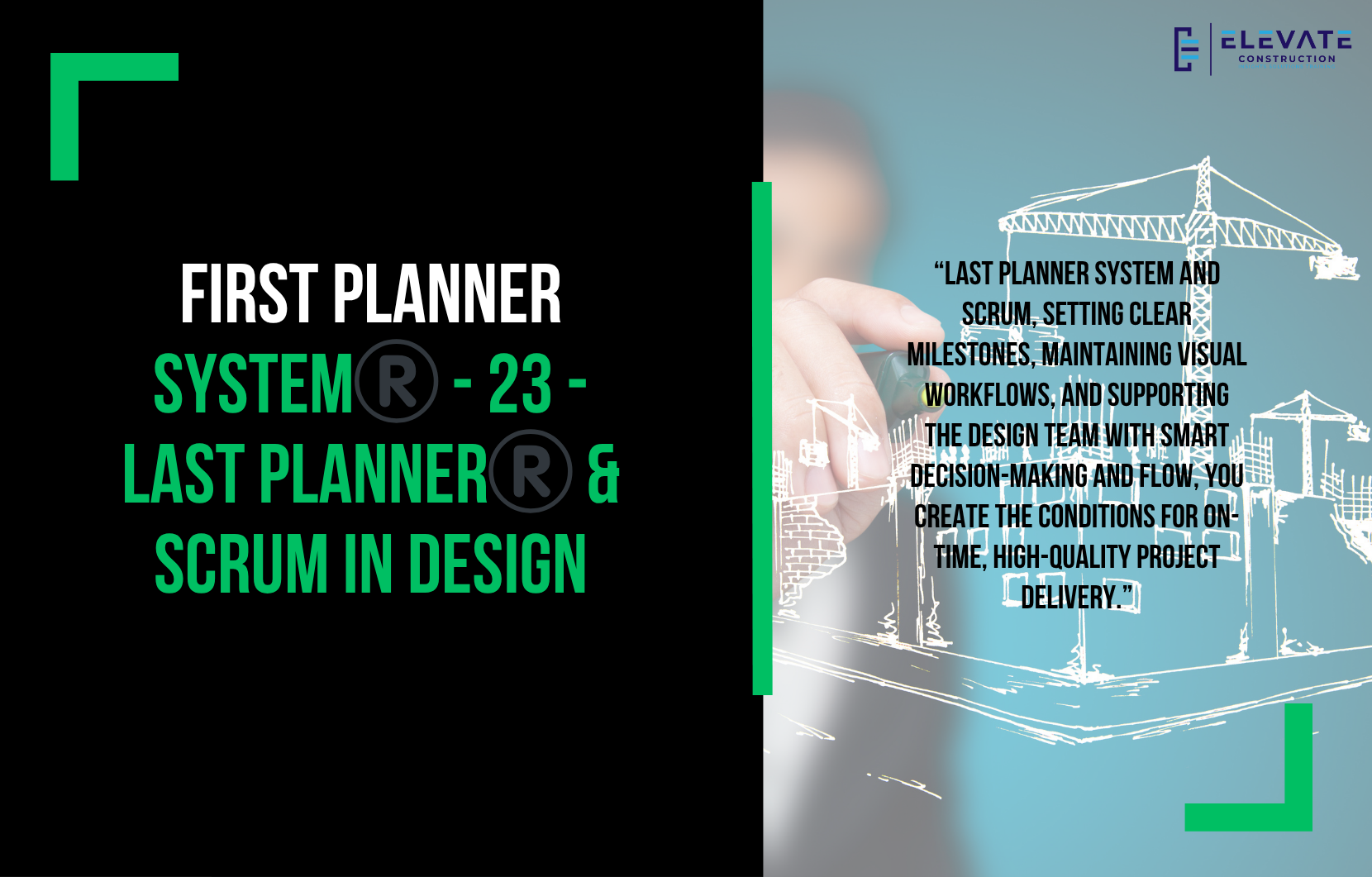Elevating Pre-Construction Planning: Last Planner System & Scrum in the Design Phase
In the design phase of pre-construction planning, structure and collaboration are critical to keeping projects on track. One way to do this effectively is by leveraging the Last Planner System and Scrum to guide your team toward success.
Last Planner in the Design Phase
When applying the Last Planner System, begin with a milestone pull (or phase pull).
- Identify milestones: Start with your final milestone, then work backward to determine necessary intermediate milestones.
- Validate milestones: Use the group’s expertise, historical timelines, and reference data to ensure they’re realistic.
- Visualize the plan: Create a clear, visual sequence of work that the team can review and refine.
In design, complexity, team capability, and workload capacity will affect milestone timing. The key is to create phase specific pull plans rather than trying to plan the entire design phase at once. This allows for accurate forward and backward passes to determine dependencies and durations.
Once your pull plan is set, move into:
- Six-week look ahead planning: Prepare tasks in advance, coordinate needs, and remove roadblocks.
- Weekly work plans: Identify exactly what will be accomplished each week, adjusting as needed.
- Daily huddles: Track progress, check percent plan complete (aim for 80%+), identify issues, and make corrections.
Software like Vplanner can make design-phase planning more visual and effective. Integrate these meetings into your cadence cluster work sessions, all-hands planning meetings, and buffer days to keep momentum strong.
Scrum in the Design Phase
Scrum brings flexibility and visual tracking to the design process. Start with a milestone pull and, if desired, a phase specific pull plan. Move your activities into a Scrum board with four columns:
- Backlog: All tasks (with effort points using Fibonacci numbers).
- Sprint Backlog: Tasks chosen for the current sprint (often one week).
- In Progress: Work actively being done.
- Completed: Finished tasks.
Run the process like this:
- Sprint Planning: Decide what will be accomplished in the sprint.
- Daily Huddles: Move tasks from left to right, help team members when needed.
- Sprint Review & Retrospective: Assess progress, improve the process.
A burn down chart helps visualize whether the team is on track by plotting total effort remaining against time.
Best Practices for Enabling the Design Team
- Use a decision matrix: Make decisions based on clear evaluation criteria and keep a documented history.
- Help the team flow: Avoid overloading them with distractions and excess communication.
- Work in one-piece flow: Avoid batching; finish tasks completely before moving on.
- Create a “Done, Done, Freaking Done” culture: No partial work; ensure accountability.
- Control Work in Progress (WIP): Keep workloads balanced.
- Recover delays quickly: Collaborate to find solutions without overburdening the team.
Early Deliverables to Track
- Early procurement: Track long-lead items early.
- Existing utilities: Identify and plan for relocations now.
- Geotech report: Understand soil conditions and site prep needs.
- Engage VDC: Involve Virtual Design and Construction early for model coordination.
By setting up the right systems, milestones, and rhythms, your design team will have clarity, focus, and momentum creating a strong foundation for the rest of the project.
Key Takeaway:
A successful design phase in pre-construction hinges on structured collaboration. By combining the Last Planner System and Scrum, setting clear milestones, maintaining visual workflows, and supporting the design team with smart decision-making and flow, you create the conditions for on-time, high-quality project delivery.
If you want to learn more we have:
-Takt Virtual Training: (Click here)
-Check out our Youtube channel for more info: (Click here)
-Listen to the Elevate Construction podcast: (Click here)
-Check out our training programs and certifications: (Click here)
-The Takt Book: (Click here)
Discover Jason’s Expertise:
Meet Jason Schroeder, the driving force behind Elevate Construction IST. As the company’s owner and principal consultant, he’s dedicated to taking construction to new heights. With a wealth of industry experience, he’s crafted the Field Engineer Boot Camp and Superintendent Boot Camp – intensive training programs engineered to cultivate top-tier leaders capable of steering their teams towards success. Jason’s vision? To expand his training initiatives across the nation, empowering construction firms to soar to unprecedented levels of excellence.
On we go

